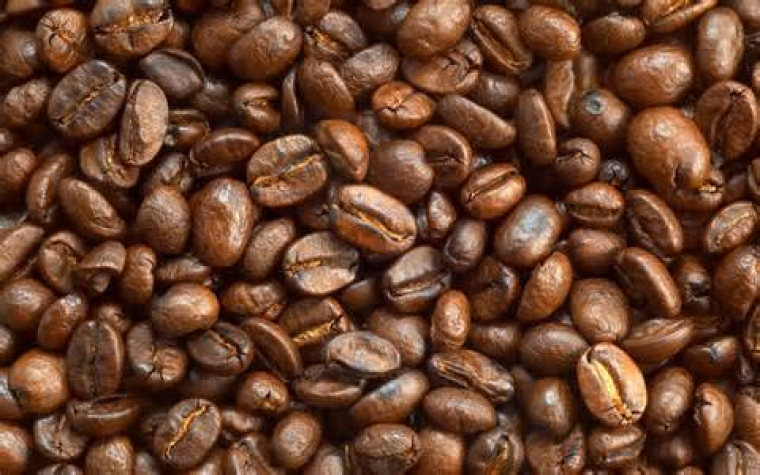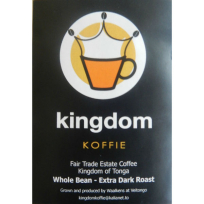Products
Shop Online
Shopping Cart

Shop Online with Kingdom Koffie

The Kingdom Koffie plantation is located in Vaini on the main island of Tongatapu.
Coffea is a genus of flowering plants whose seeds called coffee beans, are used to make coffee. It is a member of the Rubiaceae family. Coffee is a deciduous, shrub-like tree. Trees are pruned back each year to less than 8 feet in height, and every 8-10 years the tree is pruned nearly to the ground. The life of the tree in terms of good coffee production can be 50 years. Several species of Coffea may be grown for the beans (however Coffea Arabica is the species grown in Tonga) The coffee beans are all green to start with and once they turn red they are ready to be handpicked. Then the beans are loaded into a machine for shelling. Once shelled the beans are left out on the drying racks for at least 3 months prior to roasting.
Read More
The Kingdom Koffie plantation is located in Vaini on the main island of Tongatapu.
Coffea is a genus of flowering plants whose seeds called coffee beans, are used to make coffee. It is a member of the Rubiaceae family. Coffee is a deciduous, shrub-like tree. Trees are pruned back each year to less than 8 feet in height, and every 8-10 years the tree is pruned nearly to the ground. The life of the tree in terms of good coffee production can be 50 years. Several species of Coffea may be grown for the beans (however Coffea Arabica is the species grown in Tonga) The coffee beans are all green to start with and once they turn red they are ready to be handpicked. Then the beans are loaded into a machine for shelling. Once shelled the beans are left out on the drying racks for at least 3 months prior to roasting.
The roasting process is what produces the characteristic flavour of coffee by causing the green coffee beans to expand and to change in colour, taste, smell, and density. Roasting typically operate at temperatures between 240–275°C (464–527°F), and the beans are roasted for a period of time ranging from 3 to 30 minutes. Initially, the process is endothermic (absorbing heat), but at around 175°C (347°F) it becomes exothermic (giving off heat). For the roaster, this means that the beans are heating themselves and an adjustment of the roaster's heat source might be required. At the end of the roasting cycle, the roasted beans are dumped from the roasting chamber and cooled with forced air. The most popular method of determining the degree of roast is to judge the bean's colour by eye. As the beans absorb heat, the colour shifts to yellow and then to increasingly darker shades of brown. During the later stages of roasting, oils appear on the surface of the bean. The roast will continue to darken until it is removed from the heat source. Beans will also darken as they age, making colour alone a poor roast determinant. Most roasters use a combination of bean mass temperature, smell, colour, and sound to monitor the roasting process. Sound is a good indicator of bean temperature during roasting. There are two temperature thresholds called "cracks" that roasters listen for. At about 205–207°C (401–405°F), beans will emit a cracking sound much like popcorn does when it pops, only much quieter. This point is called "first crack," marking the beginning of light roasts. When the beans are at about 224–227°C (435–441°F), or a medium roast, they emit a "second crack." This is the dividing point between medium and dark roasts. During first and second "crack" pressure inside the bean has increased to the point where the structure of the bean fractures, rapidly releasing gases, thus an audible sound is emitted Kingdom Koffie is very exotic and scarce, just a limited volume of coffee is available from each crop so the smaller quantities make Kingdom Koffie a truly sought after commodity from the Kingdom of Tonga.




